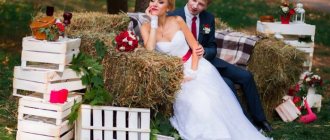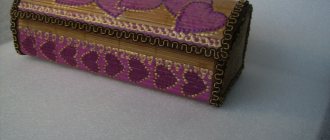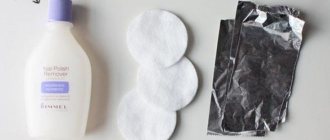Is it possible to take photos in the rain?
First, let’s figure out whether it’s possible and whether it’s even worth shooting in the rain. This question affects three sides: the photographer, the technique and the model (if there is one).
Shooting in the rain means:
- Opportunity to get atmospheric shots;
- Chance of getting wet and getting sick;
- Risk of getting wet and damaging photographic equipment.
If at the start you don’t see any special atmosphere in the rain, and its grayness and slush deprive you of any inspiration, of course, you shouldn’t risk your health and equipment for shooting in the rain.
But if the first point outweighs all concerns for you, then it’s definitely worth a try, while reducing all risks to zero.
How to prepare for shooting in the rain?
Of course, if you were planning a sunset shoot and suddenly a thunderstorm started, then you might be better off rescheduling the shoot to another day and implementing your idea. But if you have long wanted to shoot in the rain, then prepare for shooting in advance.
- Bring waterproof shoes and raincoats, as well as a spare set of clothes in case you get wet.
- Take umbrellas with you: an umbrella will not only save you from the rain, but will also serve as the most appropriate accessory on a rainy day.
- In addition to a regular umbrella, you can grab a mini umbrella that fits on the photographer’s head and frees up his hands.
- Rent a waterproof camera case or simply stick it in a bag with a hole for the lens.
- Screw a lens hood onto the lens to protect the lens from dripping.
- Grab an absorbent wipe to wipe down the lens if any drips get on the housing or protective filter.
- Shoot from a safe shelter (canopy, canopy, car interior) using a long lens.
- Warm up with hot tea or coffee from a thermos or warm up in a nearby cafe (photos through the window are also very interesting).
How to take photos in the rain without ruining your camera?
The first thing you need to protect from drops is the lens or filter (if you have one). Be careful not to get them wet, otherwise the quality of the images may suffer. Remember about the mistakes of novice photographers.
Here are some simple ways to protect your camera equipment from moisture:
- Keep the camera under your jacket and only take it out for a few seconds to take another photo. However, you can simply open the camera’s view and remove it from under outerwear or a raincoat.
- Screw the lens hood onto the lens, and then look for scenes. This will reliably protect the front lens from water drops getting on it even in windy weather, and, consequently, from defects in the photo.
- A special waterproof case will reliably hide your device from moisture. You can buy it at a photo store. However, there is a simpler option: place the camera in a plastic bag, making a hole in it for the lens.
- You can use a tiny umbrella. Always carry it with you in case you want to capture something interesting in the rain.
- And perhaps the most versatile option is to hide under a canopy with your camera. This is especially useful if you have a long lens.
Photographer: Oleg Pivovarov.
If drops do get on your camera, be sure to leave it to dry at room temperature as soon as you return home.
Why take photos in the rain at all?
Here's a whole list of benefits of shooting in the rain:
- Only a blind person hasn’t photographed at sunset, but not every photographer dares to experiment during the rain.
- If it's a thunderstorm, then you can take beautiful and unusual pictures of lightning cutting the sky into pieces.
- When it rains, everything gets wet and shiny, and the wet surface gives objects additional volume and charm.
- When it rains, wet asphalt and puddles turn into a mirror, reflecting the light of lanterns, shop windows and signs.
- Rainy weather allows you to express a melancholic mood: thoughtfulness, sadness, loneliness, despair.
- Shots of characters walking in the rain can also demonstrate childishness, recklessness, and even passion.
- Rain can add drama to a portrait and add extra spice to the nude genre.
- When it rains, the streets are empty - this is a wonderful opportunity to take street photos of empty places where there is usually a large flow of people.
- Oddly enough, the most comfortable pictures are taken during the rain, if you take them indoors near the window.
Photo kettle
Tweet
With the rainy days upon us, don't let the weather stop you from taking beautiful photos. There are many good photography options to try during rainy weather.
So next time it's raining, try some of the ideas and suggestions below. Of course, you will need to protect your camera from exposure to wet weather. So either protect yourself and your camera with an umbrella by placing your camera in a waterproof camera bag, or find a suitable shelter and shoot from there.
- Use appropriate and interesting props
Why don't you go for a portrait session when it's raining outside and frame the subject with the right subject matter. You can give your model a colorful umbrella or frame her face with the fluffy hood of an autumn coat.
With the right accessories, you and your model will have fun while photographing, and it will help you capture natural smiles and create masterpiece live photographs.
- Shoot reflections
Rain puddles allow you to create truly creative reflection photographs, whether they are portrait reflections of your subject, or reflections of architectural structures or various statues.
You can shoot only reflections, or also include some details and objects from the scene's natural surroundings.
- Splash in the puddles
You can also practice shooting dynamic images using rain puddles. Ask your friend or acquaintance to put on colorful rubber boots and walk (splash) through the puddles.
Use fast shutter speeds and continuous autofocus to get clear, sharp photos of colored water splashes.
- Look for a story with raindrops
Raindrops can add significant interest when photographing flowers and other outdoor still life subjects.
Go out and shoot while it's raining or just after it stops, and use macro mode or a macro lens to get close-up images of raindrops on your subjects.
- stay home
If you can’t imagine going out for a photo shoot in damp or rainy weather, you can easily find a suitable subject for photography at home.
You can take up portrait photography using natural window lighting, or create your own mini studio using a table lamp, shooting interesting still lifes that you come up with.
Good luck to you in this not easy task. Your Phototeapot.
Share on social media networks
RќСЂР°РІРёС‚СЃСЏ
Further on topic:
- Taking photos in Bulb mode Almost all digital SLR cameras have a special mode that allows the photographer to go beyond the longest automatic […]
- How to photograph flowers in nature It is difficult for a photographer who sees a beautiful flower while walking in the park to resist the temptation to photograph it. Such beauty does not last forever, [...]
- How to learn to take photographs Photography is currently one of the most popular hobbies that, in addition to aesthetic pleasure, can also bring […]
- Tips for photographing a portrait outdoors in sunny weather Probably every novice photographer has heard at least once in their life that it is better to take portraits outdoors in the early morning or evening, rather than [...]
See also:
NO. 1 IN THE WORLD OF PHOTOGRAPHY
Winter photo shoot - useful tips from photographers
Taking pictures of the fire. Practical advice
How to shoot timelapse? Basics for Beginners
What settings should I use in the rain?
When it rains, it is not only wet, but usually also dark, so we will use techniques for shooting in the dark.
- We illuminate the subject with the light of lanterns and shop windows (a flashlight can also help out). If it is not a prolonged rain, then try to photograph the sky before the rain begins and the moment when the last drops are already illuminated by the light of the sun's rays. You can also use an external flash to highlight the characters.
- We work with endurance. To blur raindrops, set the shutter speed longer and remove from the support to avoid blurring stationary objects. To freeze droplets in the air, set the shutter speed faster, but keep in mind that little light will reach the sensor, so you will have to open the aperture slightly (if this does not contradict the idea) or increase the light sensitivity (which can lead to digital noise in the photo).
- We use pre-focus. If the camera does not recognize drops and focuses on more contrasting objects, press the button halfway and focus on what you can, and then move the focus area to the raindrops and press the button.
Technique for shooting in the rain
Now let's turn to the technical side of the issue. How to photograph in the rain , what settings to use in order to accurately convey the mood?
Firstly, shutter speed is a photographer’s main ally in such weather. A short shutter speed (500, 250 ms or less) will help you effectively capture bubbles, drops, and circles on the water, but to shoot streams and streams of rain moisture, you will need a long shutter speed (more than 1 second).
A heavy rainfall with a long shutter speed can be captured very effectively: you will get a variety of streaks from the drops. But to keep your camera stationary, you'll need a tripod. To capture the glare of a wet surface, experiment with your aperture when shooting at slow shutter speeds.
Secondly: it often happens that the camera does not recognize raindrops and streams of water as subjects and focuses on other objects. Pre-focusing will help you avoid such difficulties - almost every modern camera has this function. Press the shutter button all the way down and focus on any object that your camera “sees”. Then carefully move the focus area to the desired location and press the button completely.
Photographer: Gennady Meshcheryakov.
In this case, the exposure should not be fixed during preliminary focusing, but precisely at the moment the shutter button is pressed. The best option is to manually adjust the distance to the subject. Use manual focus.











